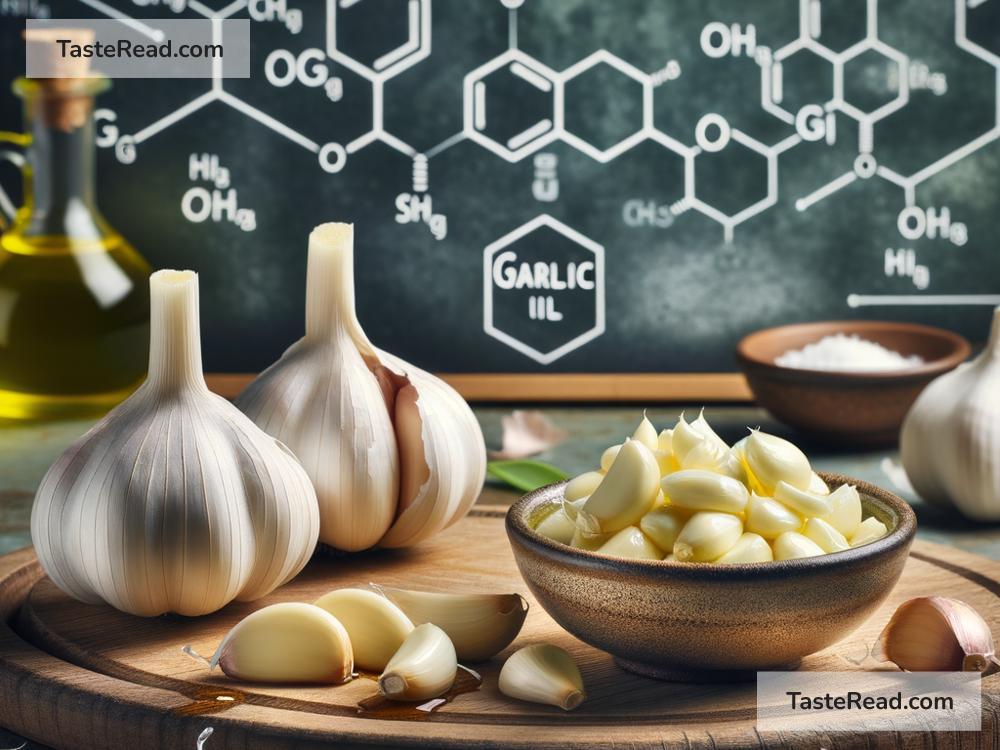The Role of Sulfur Compounds in the Distinct Flavor of Garlic
Garlic is one of the most popular ingredients in kitchens around the world. Its bold, flavorful punch can transform a simple dish into something extraordinary. But have you ever wondered what gives garlic its unique taste and aroma? The answer lies in the sulfur compounds within garlic. These powerful chemicals are what make garlic so special. In this article, we’ll explore how sulfur compounds create garlic’s distinct flavor and how they affect its taste and smell.
Garlic’s Unique Flavor: A Chemical Creation
Garlic belongs to the allium family, which includes onions, leeks, and shallots. Allium vegetables are known for their strong and flavorful characteristics. Garlic stands out because of its high concentration of sulfur compounds, which are responsible for its sharp, pungent taste and distinctive smell.
One of the key sulfur compounds in garlic is alliin, which exists in raw garlic as a natural chemical. Interestingly, alliin itself doesn’t have a strong smell or taste—it’s quite mild before garlic is processed. The magic happens when garlic is chopped, crushed, or minced. This process triggers a fascinating chemical reaction that activates its strong flavors.
The Power of Allicin: Garlic’s Star Player
When garlic is crushed or chopped, the cells in the garlic bulb are broken open. This allows alliin to interact with an enzyme called alliinase. Together, they create a new compound known as allicin, which is the main contributor to garlic’s signature taste and scent.
Allicin is highly reactive and doesn’t stay stable for long—it quickly breaks down into other sulfur compounds, such as diallyl disulfide and ajoene. These secondary compounds also play a role in garlic’s flavor, giving it an even richer and more complex taste. The whole process is what gives fresh garlic its sharp, spicy, and slightly bitter flavor when raw, or its mellow sweetness when it’s cooked.
Why Garlic Smells So Strong
The pungent smell of garlic is also a result of its sulfur compounds. Allicin and its breakdown products are volatile—that means they evaporate easily into the air, escaping as tiny aromatic molecules that hit your nose. This is why freshly chopped garlic smells so powerful. The sulfur compounds act like tiny chemical messengers, alerting our senses to garlic’s presence.
Interestingly, garlic’s strong aroma is loved in food but not always appreciated on hands, breath, or clothes. If you’ve ever cooked with garlic, you know it can leave a lingering smell even after you wash your hands. That’s because sulfur compounds can interact with your skin and stick around for a while.
Raw Garlic vs. Cooked Garlic: How Flavor Changes
The sulfur compounds in garlic are highly sensitive to heat, which is why raw garlic tastes completely different from cooked garlic. In its raw form, allicin and other sulfur compounds create a bold, spicy taste that some people find overwhelming. This is why raw garlic is often used sparingly in recipes, such as salad dressings or sauces.
When garlic is cooked, its chemistry changes. Heat breaks down allicin and other volatile sulfur compounds, reducing their intensity. This transformation creates a sweeter, nuttier flavor that’s far more mellow. Roasted garlic, for example, becomes soft, rich, and caramel-like because the sulfur compounds degrade and the natural sugars in garlic start to caramelize.
Garlic in Everyday Cooking
Sulfur compounds don’t just make garlic taste good—they actually make it healthier, too. Allicin has been studied for its potential health benefits, including antimicrobial and anti-inflammatory properties. While most of the health benefits of garlic are linked to its raw form, its flavor-enhancing properties shine in a wide range of dishes.
Garlic is a versatile ingredient that can be used in countless ways—whether you’re sautéing it with vegetables, blending it into pasta sauce, or roasting it whole for a sweet, spreadable treat. The way you prepare garlic will affect its flavor, so it’s worth experimenting to discover what works best for you and your recipes.
Fun Facts About Garlic’s Flavor
- Garlic can taste different depending on where it’s grown and how it’s stored. Soil type and growing conditions can affect the amount of sulfur in the garlic bulbs.
- Black garlic, a fermented version of garlic, has a completely different flavor profile—sweet, tangy, and almost syrupy—because its sulfur compounds break down during fermentation.
- The “freshness” of garlic matters! Minced garlic starts losing its allicin shortly after it’s cut, so freshly prepared garlic will always have the strongest taste.
Conclusion
Garlic’s distinct flavor and aroma can be traced back to its sulfur compounds, particularly alliin and allicin. These amazing chemicals are responsible for garlic’s spicy, pungent kick and the sweet, mellow taste we enjoy when it’s cooked. Whether you’re a fan of raw garlic’s boldness or prefer the gentle sweetness of roasted garlic, understanding how sulfur compounds create garlic’s flavor can help you appreciate this humble ingredient even more.
So the next time you chop, crush, or roast garlic, remember the tiny sulfur compounds working behind the scenes to make your meal delicious. Garlic truly is the gift that keeps on giving, from its unmistakable taste to its wonderful aroma and even its health benefits.


